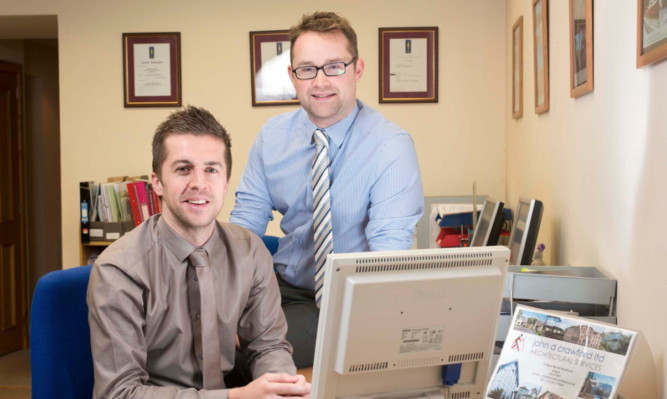AN ANGUS architectural practice plans to build more energy efficient homes in Scotland after tapping into European funding to boost its employees’ skills.
Montrose firm John D Crawford reaped the reward from European social funding, accessed via the Skills Development Scotland’s Low Carbon Skills Fund, which gives companies the opportunity to apply for up to £12,500 towards employee training costs.
The fund can be accessed by all Scottish businesses with up to 250 employees. It is geared towards allowing businesses to increase the skills and qualifications of their workforce.
The architects firm directed the funding to help three members of its staff to learn more about creating ultra-low-energy buildings which need little power for heating or cooling.
Now the firm said it intends to utilise the new skills of its staff to build more ‘Passive Homes’ throughout Courier Country and beyond that can be heated by using a number of energy sources, including sunlight coming in through windows.
Senior technician David Paton said: “We used this as part of our continuous professional development plan and I would say the training was very useful and will definitely benefit the business.
“As responsible designers we actively encourage and advise our clients on sustainability and renewable technologies to their projects,” he added.
“Although there is no requirement for existing properties to have these technologies installed, all new houses have to have a small element of these technologies to pass current building regulations.
“Very soon all new homes will have to be completely sustainable or up to passive house standard.”
Although the Skills Development Scotland’s Low Carbon Skills Fund cannot be used for statutory staff training, a number of levels of training in Scotland are eligible for support.
These include training in renewable energy, low carbon technologies and microgeneration; energy efficiency, environmental and clean technologies; waste management and reuse; and reducing carbon in supply and energy management.
business@thecourier.co.uk
